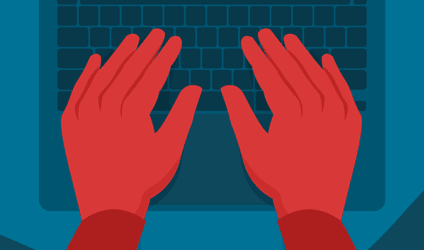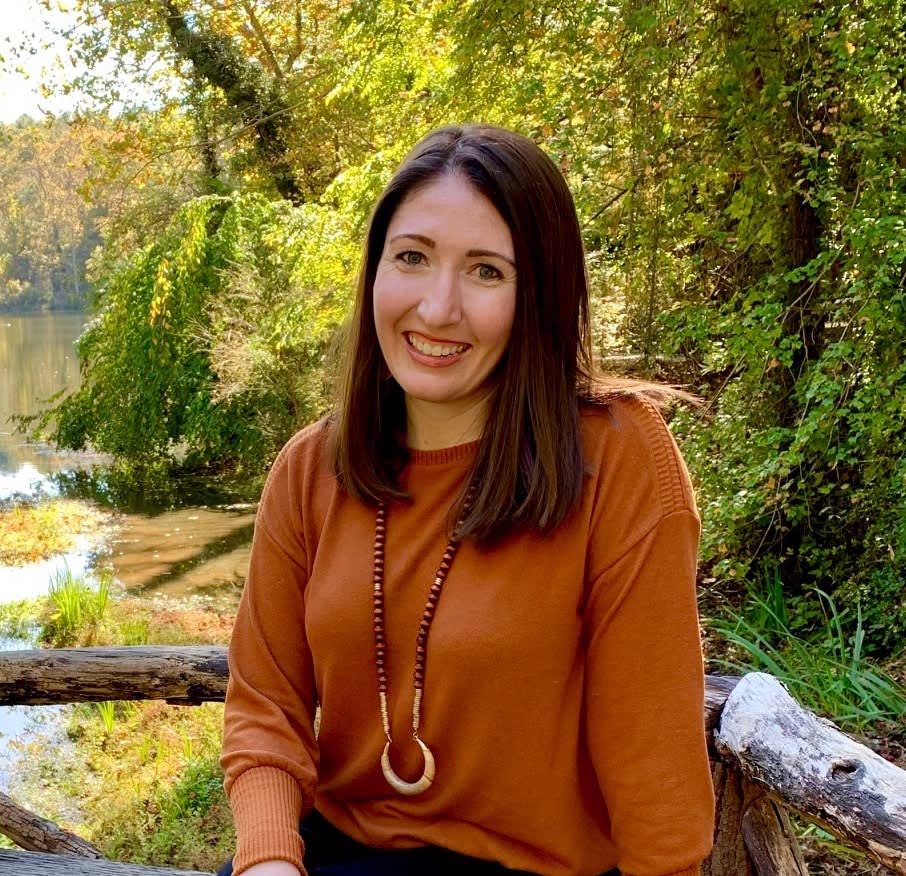Resources for Teaching Kids to Code
Writer
Writer
Editor
Writer
Writer
Editor
BestColleges.com is an advertising-supported site. Featured or trusted partner programs and all school search, finder, or match results are for schools that compensate us. This compensation does not influence our school rankings, resource guides, or other editorially-independent information published on this site.
Find the program that's right for you
Learn new skills quickly with a bootcamp, or earn a degree from a traditional college.
Answer a few questions to get matched with a bootcamp that fits your needs.
Explore accredited colleges to get matched with the best program for you.
- Coding can teach kids problem-solving, persistence, and teamwork.
- Many apps and games teach kids how to code through play and creativity.
- These apps and games are available for different age ranges and budgets.
Childhood is a great time to learn how to code. Coding can help kids develop problem-solving skills, and it encourages creativity and imagination. Plus, it provides a good foundation for learning more computer science principles later on.
Of course, reading a 500-page textbook full of small black and white text and programming scripts probably isn't the most engaging way for kids to learn to code. Luckily, you can find many resources specifically designed to make coding lessons age appropriate, easy to digest, and, most importantly, fun.
Why Teach Kids to Code?
According to the Bureau of Labor Statistics, STEM occupations are projected to grow twice as fast as the average growth rate of 5% from 2021-2031. Programming knowledge can equip kids with marketable skills for the field later on. Even without looking ahead 18 years, kids should learn to code for these fundamental reasons.
Coding Teaches Kids to Solve Problems
As a discipline, coding is full of challenges. Coding requires kids to look at problems from several angles and come up with possible solutions. Honing problem-solving skills at a young age can provide a strong foundation for confronting challenges in everyday life.
Coding Teaches Kids Resilience
When kids develop a fixed mindset, they often want to give up when things go wrong. And things go wrong in coding frequently, which can help kids learn to deal with failures. They will learn how to come up with another solution and move on.
This persistence teaches kids that small failures don't need to stop their progress. Instead, they're opportunities to solve problems in creative ways and develop a growth mindset.
Programming Can Help Kids Develop Creativity
When it comes to coding, the sky's the limit. Kids can use their imagination to create projects, become world-builders and creators, and have fun with experimentation. Even though programming relies heavily on math and technology, it can also help kids strengthen their creative and artistic sides.
Coding Can Teach Entrepreneurship and Teamwork
Programming allows people to create their own websites, apps, and games. Coding apps like Hopscotch allow kids to pay each other with virtual coins to use each other's games. Many coding platforms also include collaborative tools, connecting kids with each other so they can build programs together.
Coding Is Fun
Programming can teach kids plenty of useful skills. Still, at their core, many coding apps for kids are simply fun. And there are few things more essential to childhood than having fun and letting your imagination run wild.
Find the Right Coding Bootcamp For You
10 Resources to Teach Your Kids to Code
Codeable Crafts
Codeable Crafts, a free app for Android devices and iPads, introduces coding to kids by appealing to their imagination. This app allows kids to experiment with programming through storytelling. Children can animate their own stories or add animations to story prompts using simple "coding blocks."
CodeCombat
CodeCombat takes a game-based approach to coding, offering courses for classrooms and kids who want to code on their own. Students learn coding languages like Python and JavaScript through a gaming platform guided virtually by teachers. Kids can also connect with each other by joining a competitive AI coding league.
Learners can enroll in self-paced courses, a summer class, or private lessons. Most courses are one-on-one, but the summer class includes four students. Kids can take the first lesson for free, but further lessons can cost anywhere from $55 per week to $399 per month.
Codemoji
Codemoji offers a coding curriculum for students in grades 1-8. The program teaches HTML, CSS, and JavaScript. Kids build their own websites and create animations within a designated virtual play area.
Students can enroll in courses at beginner, intermediate, and expert levels. Codemoji aims to make its programs both playful and challenging so that kids are neither bored nor discouraged.
Parents can enroll their children in either a $15 per month plan or a $55 per year plan. These packages both include lessons, projects, and live customer support.
Code.org
Code.org, a nonprofit organization, aims to expand access to coding education for students worldwide. The group's Hour of Code campaign claims to have served over one million students. Plus, Code.org has integrated computer science classes in schools all over the U.S.
Code.org facilitates in-person classes in local schools and communities. The site also offers online computer science courses that kids can take from home. For introductory or quick-hit lessons, students can also access one-hour tutorials on topics like artificial intelligence and Minecraft.
Hopscotch
Designed for kids ages 10-16, Hopscotch is an app that teaches users how to build code by creating animated stories, games, and art. This coding app, which works on iPad or iPhones, also teaches kids about entrepreneurship. Game players can "pay" game creators with in-app currency seeds, which encourages users to get creative and build enticing programs.
Parents can choose between a $9.99 per month or a $79.99 per year plan. Users can test out the app through a seven-day free trial.
Scratch and ScratchJr
The apps Scratch and ScratchJr teach coding to kids through imagination and creativity. The apps were developed by the DevTech Research Group at Tufts University, MIT's Lifelong Kindergarten Group, and the Playful Invention Company. Scratch is directed at kids ages 8-16, while ScratchJr offers lessons for kids 5-7.
Kids can create their own interactive stories and work collaboratively with each other to build teamwork skills. App users can also access tutorials and an ideas page to help them create stories and games.
Students in over 200 countries can access these apps in more than 70 languages. Scratch is available for computer download, and kids can also play on their web browser. Scratch is free to use.
SpriteBox Coding
SpriteBox Coding teaches kids as young as four the basics of coding. The app teaches functions like sequencing, parameters, loops, procedures, and basic Swift and Java syntax. The app describes itself as an "adventure game" that instructs children through coding icons that eventually turn into textual commands.
Users can download the app for $4.99 through the Apple Store or Google Play.
Swift Playgrounds
This app focuses on Swift, a programming language for Apple apps. Swift Playgrounds allows users to guide a character through a 3D world by using real code. As players learn more advanced concepts, they make their way through increasingly difficult levels. Along the way, players master concepts like commands, loops, parameters, and variables.
Apple designed the programming language Swift and developed the Swift Playgrounds app. Users can download Swift Playgrounds for iPad or Mac.
Tynker
Tynker is an online creative coding platform that teaches computer science skills to kids ages 5-18. Lessons start with an introduction to computing through block-based coding challenges. As students learn more, these blocks turn into JavaScript and Python commands. The courses take an immersive, game-like approach to keep kids engaged.
Students can follow self-paced plans or participate in group classes or private lessons. Tynker offers three payment plans, including quarterly, yearly, and lifetime subscriptions.
Vidcode
Designed for teenagers, Vidcode offers courses like intro to JavaScript, game development, HTML and CSS, and physical computing with Makey Makey. During these lessons, students learn how to create complex projects like games and simulations.
Thousands of schools incorporate Vidcode into their curriculum, but many teens also use the program at home. They can follow self-paced study with over 300 tutorials and create their own projects. Learners can pay $8.99 per month, $71.88 per year, or $135 for a lifetime membership.
Frequently Asked Questions About Teaching Coding to Kids
What is a good age to start learning to code?
Many coding apps are aimed at children as young as five years old, when they can learn about coding through gamified techniques. That initial exposure probably won't make them experts in coding, but it can help them get started.
What is the best programming language for a child to learn?
For young kids and children with no previous experience in coding, Scratch provides a great introduction. Scratch uses colorful command boxes instead of text-based coding, which makes it easier for kids to use. Students in a slightly older age range can also learn HTML and CSS, JavaScript, and Python.
Are there free resources to teach kids coding?
Yes. Scratch and ScratchJr, popular tools to introduce kids to coding, are both available for free. The nonprofit organization Code.org also offers several free coding resources.
How do I start teaching my children to code?
Showing your child that coding can be fun can help them want to learn how to do it. Coding allows kids to use their imagination in a whole new way, which many kids are already attracted to. So, whether it’s building imaginative worlds or playing games by completing coding challenges, finding something your child is engaged with is the first step.
Feature Image: Rebecca Nelson / The Image Bank / Getty Images
Explore More Bootcamps Resources
View all
Where to Teach Yourself to Code

9 Fun Coding Projects for Beginners





